New Zealand Dabchick (Poliocephalus rufopectus)
The population is estimated at 1700-1800 birds and has a threat status of nationally vulnerable. The NZ Dabchick is also called weweia by Maori for its occasional shrill call wee-ee-ee.
It can be identified by its distinctive pale yellow iris. The crown of the head is black and the neck and body mostly dark brown with some white patches on each side of its tail. It is only found in the North Island (extinct in the South Island) on small clear water bodies such as, lakes and ponds especially those less than two metres deep with some dense vegetation.

The NZ dabchick feed mainly under the water on freshwater snails and mussels, aquatic insects such as, mayflies and leeches, small fish, koura (freshwater crayfish) and the leaves of water plants.
The NZ dabchick is renowned for its mating ritual which has been described as something like a tango. It builds a nest of mainly raupo dragged up from the bottom of the lake and placed in an untidy pile anchored to underwater plants or to overhanging branches. Both sexes gather nest material but only the female builds the nest sometimes within three days. Access to the nest is under water. Usually two blue white eggs are laid with both parents incubating the egg for around three weeks. The chicks leave the nest immediately after hatching and swim with or ride on the backs of their parents. NZ dabchicks are sometimes seen diving under water with their young under their wings. They are capable fliers although only under cover of darkness. Their reluctance to take flight even when disturbed means they don’t seem to be significantly affected by duck shooting.
Threats to the NZ dabchick include loss of habitat and degradation of wetlands from drainage and loss of vegetation from around the margins of lakes. Invasion of exotic plants, for example, willow modify wetlands and reduce suitability for these birds. They are also affected by disturbance and motor wash from recreational boats which swamp their nests destroying their eggs. They are also at risk from rats and mustelids (stoats, weasels and ferrets) which eat eggs and kill young chicks.

